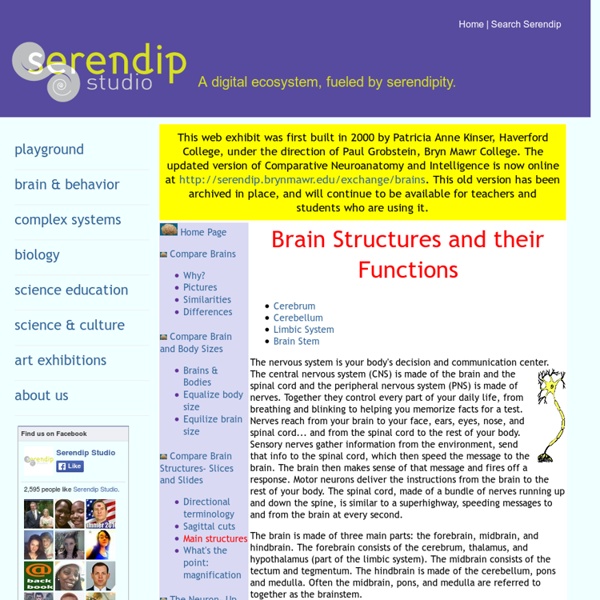Brain Waves
The human brain is more complex than your scientists suspect. They are busily mapping where certain functions occur, and how parts of the brain activate in syncronicity. They know that parts of the brain, near the stem, are older than, for instance, the forebrain, and that a human can survive remarkably well with only half a brain, as long as that half is either the right or left, intact.
World's most detailed scans will reveal how brain works
5 March 2013Last updated at 13:27 ET By Pallab Ghosh Science correspondent, BBC News Continue reading the main story Daydream Believer: an MRI scan of the brain at rest. Regions in yellow are strongly linked to the area indicated by the blue spot. A Little Bit Me: composite of the scans of 20 individuals.
Johns Hopkins Medicine Health Library
What is the central nervous system (CNS)? The CNS consists of the brain and spinal cord. The brain is an important organ that controls thought, memory, emotion, touch, motor skills, vision, respirations, temperature, hunger, and every process that regulates our body. What are the different parts of the brain? The brain can be divided into the cerebrum, brainstem, and cerebellum:
22 Calming Quotes for People with Anxiety
“P.S. You’re not going to die. Here’s the white-hot truth: if you go bankrupt, you’ll still be okay. If you lose the gig, the lover, the house, you’ll still be okay.
Know Your Neurons: How to Classify Different Types of Neurons in the Brain’s Forest
Previously, on Know Your Neurons:Chapter 1: The Discovery and Naming of the Neuron Chapter 2: How to Classify Different Types of Neurons, or The Dendrology of the Neuron Forest Scientists have organized the cells that make up the nervous system into two broad groups: neurons, which are the primary signaling cells, and glia, which support neurons in various ways. The human brain contains around 100 billion neurons and, by most estimates, somewhere between 10 to 50 times as many glial cells.
Sensory substitution
Sensory substitution means to transform the characteristics of one sensory modality into stimuli of another sensory modality. It is hoped that sensory substitution systems can help handicapped people by restoring their ability to perceive a certain defective sensory modality by using sensory information from a functioning sensory modality. A sensory substitution system consists of three parts: a sensor, a coupling system, and a stimulator. The sensor records stimuli and gives them to a coupling system which interprets these signals and transmits them to a stimulator. In case the sensor obtains signals of a kind not originally available to the bearer it is a case of sensory augmentation.
forebrain
Click anywhere inside the article to add text or insert superscripts, subscripts, and special characters. You can also highlight a section and use the tools in this bar to modify existing content: We welcome suggested improvements to any of our articles. You can make it easier for us to review and, hopefully, publish your contribution by keeping a few points in mind: Encyclopaedia Britannica articles are written in a neutral, objective tone for a general audience. You may find it helpful to search within the site to see how similar or related subjects are covered. Any text you add should be original, not copied from other sources.
Is Your Leadership Innovative?
Are your leadership actions impeding innovation? Are your change initiatives successfully implemented and delivering the benefits you expected? How is YOUR behavior impacting their ability to delivery results?


